If you’ve ever been downtown on a weekend, you’ve probably circled the McLennan County Courthouse looking for parking. For years, it was also the backdrop to Saturday mornings at the Waco Downtown Farmers Market, making it one of the most recognizable spots in the city. Even though the market has since moved to the Bridge Street Plaza, the courthouse still stands tall in the heart of downtown, full of stories, history and stunning architecture.
A Piece of Waco History: Four Courthouses Over Time
Completed in 1902, the McLennan County Courthouse is the fourth courthouse to serve the county since it was established in the 1850s. McLennan County’s journey through judicial architecture began modestly. The first courthouse, erected in 1852, was a two-story log cabin situated on the Waco City Square. As the county grew, its need for more substantial facilities also grew. The second courthouse, built in 1858, was a two-story brick structure located in the center of the square. By 1877, a third courthouse—a three-story building with a clock tower—was constructed at Second Street and Franklin Avenue. Finally, after the third courthouse could no longer accommodate the growing population of the county, the current location on Washington Avenue was built.
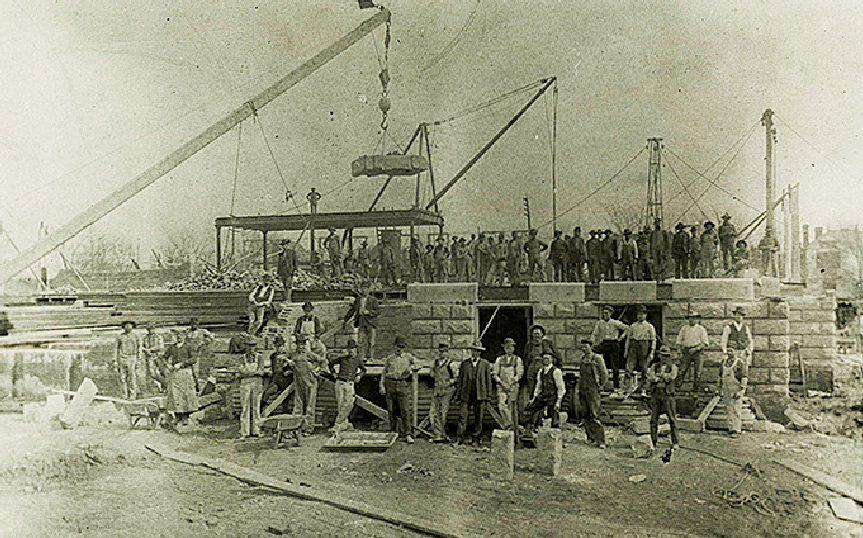
Architectural Details That Wow
The present courthouse was designed by renowned architect James Riely Gordon, known for his work on the Ellis County Courthouse in Waxahachie and the Arizona State Capitol. Constructed between 1901 and 1902, the building showcases the Beaux-Arts architectural style, characterized by its grandeur and classical details. The structure, inspired by St. Peter’s Basilica, features Corinthian pilasters and columns, dentil-adorned cornices and a prominent dome that rises in the skyline. Look closely, and you’ll find symbolic sculptures, intricate carvings and scrolls throughout the structure—including a statue of Themis, the Greek goddess of divine order, balancing her scales atop the dome. In 2017, the arms of Themis holding the scales blew off in high winds, causing the statue to be removed for four years until it was reinstalled.
The courthouse interior is just as breathtaking as its exterior, featuring Kenesaw marble columns in the Tenth Court of Civil Appeals, stained-glass art pieces and eight murals by local artist Ruth Smith that illustrate Waco’s rich history. Even if you’re not reporting for jury duty, it’s worth stepping inside to take in the details (when open to the public).
The Courthouse’s Role in Waco
For over a century, the courthouse has been the site of key legal proceedings and civic moments. It stands as a physical reminder of Waco’s resilience, growth and commitment to public service. Many notable legal cases and historically significant trials have unfolded within its walls. One of the most harrowing was the 1916 trial of Jesse Washington, a Black teenager accused of murder. After his conviction inside the courthouse, he was taken away by a mob several blocks away and lynched in a brutal public spectacle. The atrocity, widely known as the “Waco Horror,” was documented in graphic photographs and reported nationwide, sparking national outrage.
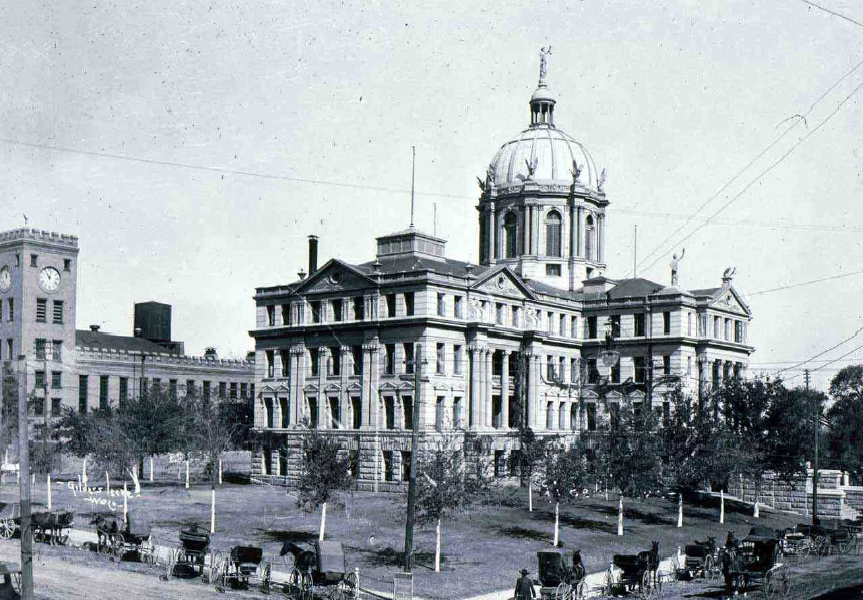
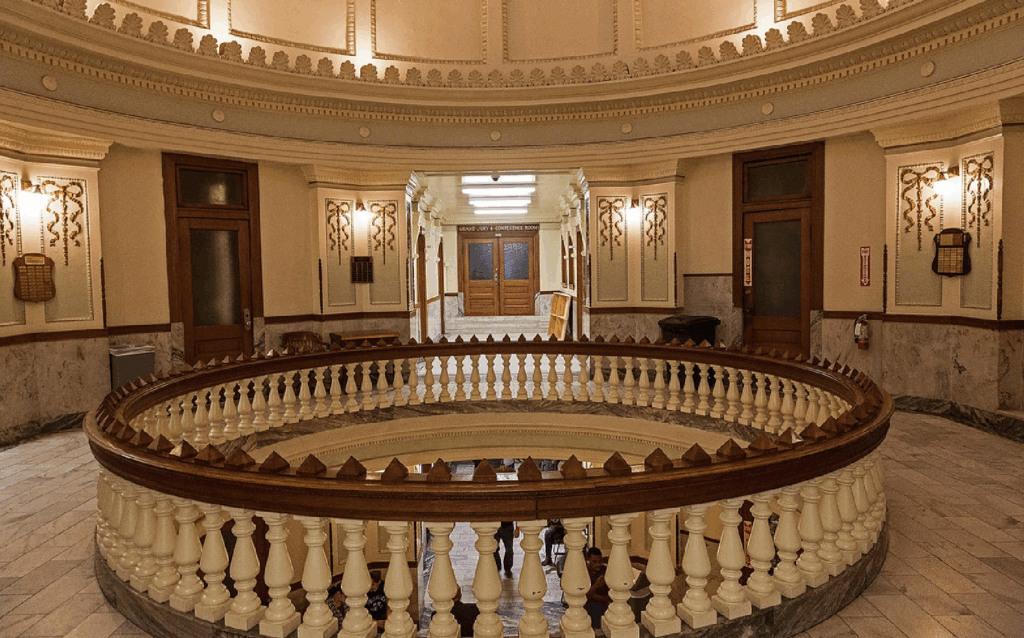
The NAACP condemned this racial violence within the justice system, acting as a pivotal moment early on in the civil rights movement. Though painful, this chapter is a critical part of Waco’s story—one that reminds us of the importance of engaging with our past, as we reflect on the institutions that have shaped our community. In 1930, Clyde Barrow (later infamous as half of the Bonnie and Clyde duo) stood trial here for burglary and theft. Decades later, in 1955, the courthouse made history again as the site of the first live televised murder trial in the U.S., when Judge D.W. Bartlett permitted KWTX-TV to broadcast the Harry L. Washburn proceedings from the 54th State District Court.
Today, the McLennan County Courthouse remains an active center of justice and a cherished historical landmark. Its enduring presence reflects Waco’s commitment to preserving its rich heritage while continuing to serve the community’s needs.
A Place of Restoration, Education and Second Chances
While the McLennan County Courthouse has seen its share of serious trials, it has also become a hub for programs that support education, rehabilitation and community restoration. In recent years, the courthouse has hosted initiatives that are helping shape brighter futures for Waco residents of all ages.
One such initiative is the Youth Offender Prevention Program (YOPP), led by Judge Garcia since 2022. This program helps local teens better understand the justice system through courtroom simulations and real-life case examples. The YOPP has been so impactful that other courts in the area now refer young defendants to attend.
Additionally, the McLennan County District Attorney’s Office hosts an annual Expunction Fair, offering people with non-conviction arrest records a chance to clear their names. With help from volunteer attorneys and waived filing fees for indigent applicants, this fair removes cost barriers and gives people the opportunity to start fresh.
The courthouse is also home to specialized courts that provide restorative paths to justice. McLennan County’s Recovery Court, Veterans’ Court and Mental Health Court focus on rehabilitation and community support for individuals facing unique personal challenges. These specialty courts received a boost through a Texas Bar Foundation grant to expand access to sober living resources, strengthening the safety net for those in recovery.
Moreover, through the work of CASA advocates, the courthouse continues to be a place where children find support and hope. These advocates often stand in the gap for the most vulnerable members of our community, and their presence within the courthouse serves as a reminder that justice includes compassion and care.
Progress in Leadership and Representation
In addition to making an impact in positive programs for the community, Waco has also seen powerful strides toward equity and representation. Dr. Mae Jackson, a Paul Quinn College graduate, made history as Waco’s first woman African American mayor, breaking barriers and inspiring future generations. Commissioner Patricia Miller also blazed trails as both the first woman elected to the McLennan County Commissioners Court and the first African American woman to serve on the Court.Today, Andrea Barefield serves as a key voice for progress and inclusion on the Waco City Council. Their service is a testament to the city’s ongoing growth and the importance of diverse leadership in shaping Waco’s future.
A Destination for Milestones and Meaning
Beyond its role in the judicial system, the courthouse has been the setting for some of life’s most meaningful moments. Inside its chambers, families celebrate adoptions and couples say “I do.” Outside, its grand steps and stately dome have served as a backdrop for prom photos, graduations and even courthouse wedding portraits. In 2002, the county marked the courthouse’s 100th anniversary; and in 2018, the building saw the restoration and return of its iconic rooftop eagle. From civic duty to personal milestones, the courthouse continues to be woven into the fabric of everyday Waco life.
Plan Your Visit
While the inside isn’t open for public tours, the exterior makes for a great stop on a downtown stroll or photography outing. It’s just blocks from the Brazos River, the Suspension Bridge and plenty of local shops and eateries. Next time you find yourself downtown, take a moment to admire this architectural treasure and reflect on the stories it holds. After all, it is more than just a pretty building!




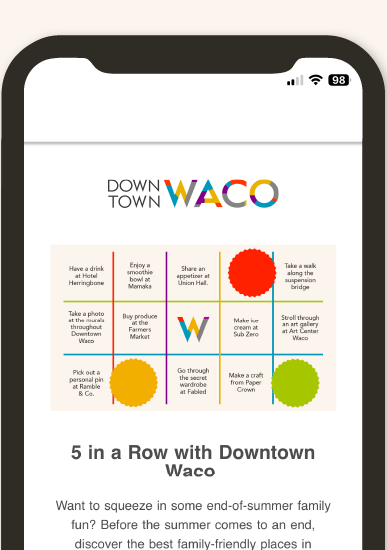


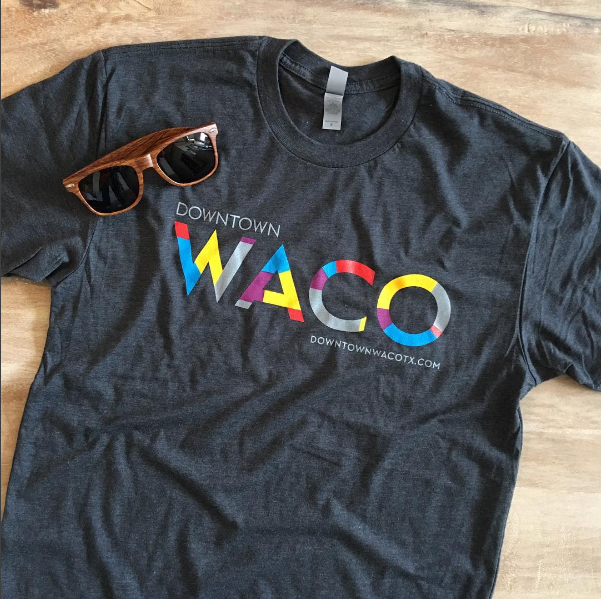
Leave a Reply